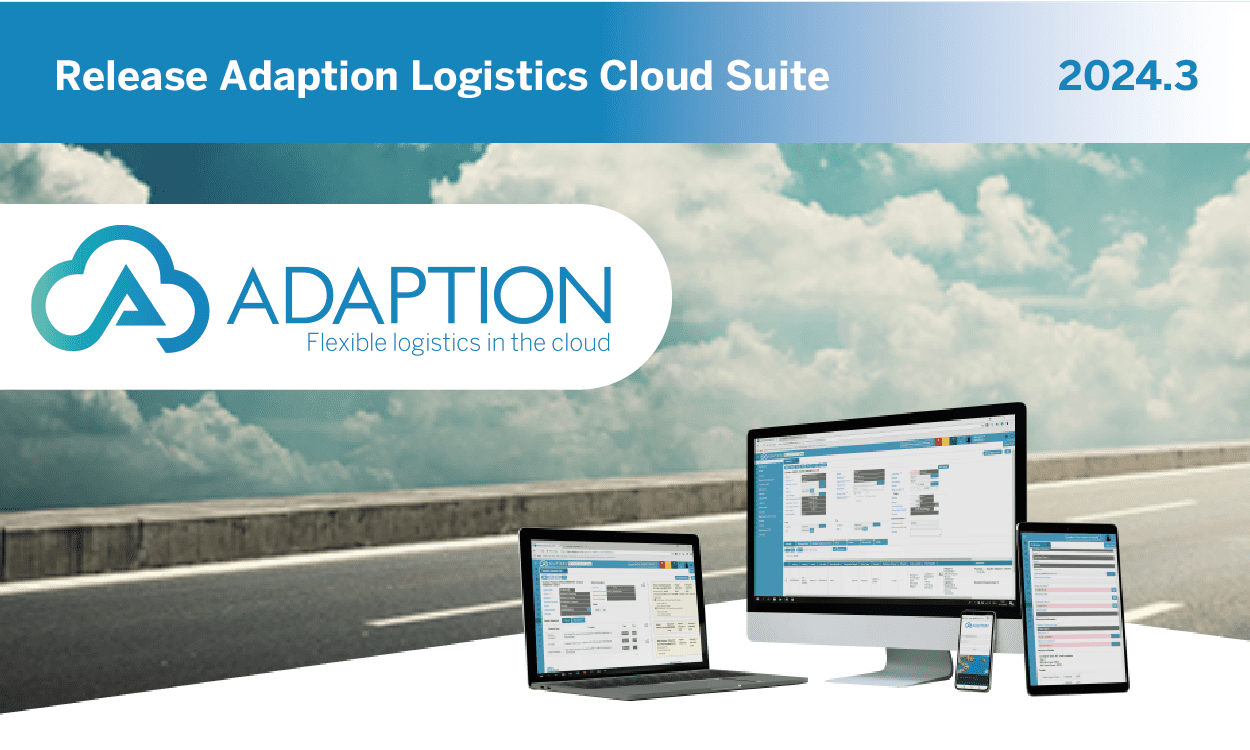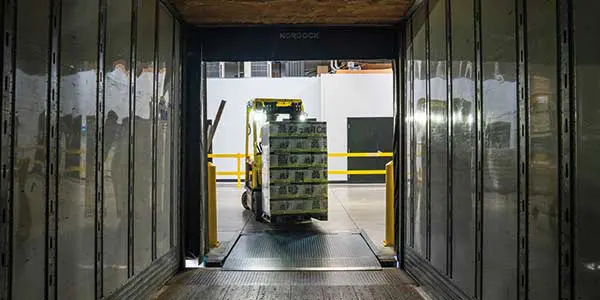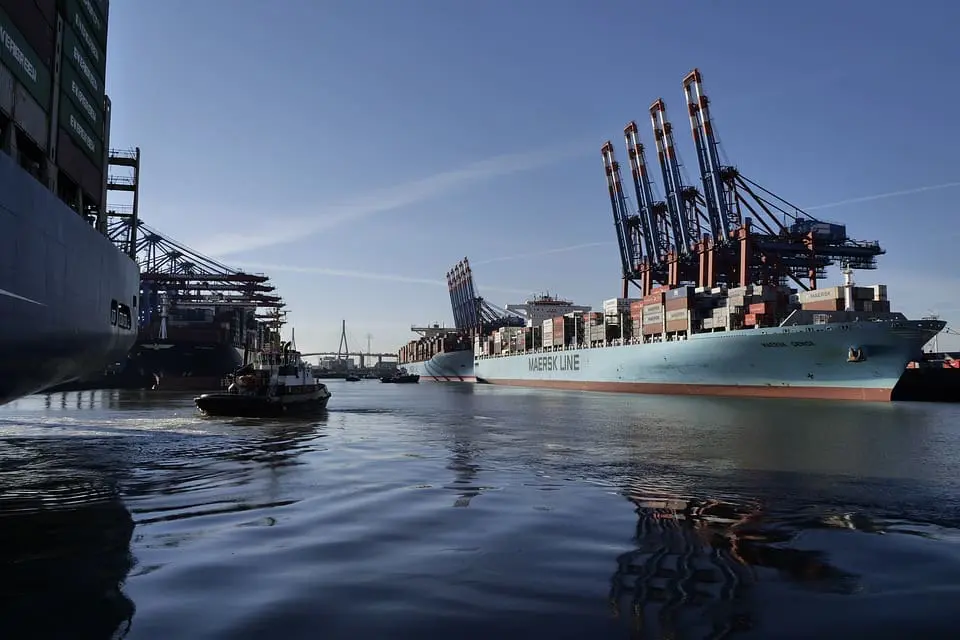Adaption Logistics Cloud Suite 2024.3 Release – What’s New?
Adaption is always moving forward. Three times a year, we release a new version of our software packed with new and improved functionalities. These updates are designed to continuously improve our logistics software, seamlessly aligning with the ever-changing demands of the market. By doing so, we ensure our customers have constant access to the most current and reliable solutions, all while maintaining flexibility and ease of use.

Updates and improvements
Several changes and improvements were made in this release. Read on to find out exactly what they include.
1. New handheld functionality: flexible workflows
Incoming goods (Inbound)

A key aspect of this update is that customers now have full control over the workflow. They can determine the order in which processes occur, for example: first receiving the goods, then conducting an inspection, and finally placing them into inventory.
Outgoing goods (Outbound)

In addition to the ability to create flexible workflows for incoming goods, this is now also available for outgoing goods. This allows users to manage the entire outbound goods process via a handheld device. The new functionality enables users to set up a complete scenario with various Value Added Services, such as picking, packing, labeling, sealing, and adding Track & Trace.
Customers can also customize the process flow, choosing the sequence that suits their needs, such as picking first, followed by inspection, and then packing.
These new inventory management functionalities offer complete flexibility and enable companies to tailor their outbound logistics processes precisely to their specific requirements, significantly improving efficiency and accuracy within the warehouse.
2. Enhanced payment and billing process with Revolut
Who is Revolut?
Revolut integration

A key new feature is the ability to automate payments via Revolut, eliminating the need for manual entry or execution of payments. Once a payment is completed, the payment statuses are automatically retrieved, and supplier information is synchronized between both Revolut and Adaption. This greatly simplifies the payment process, reduces errors, and saves time through the automatic reconciliation of data between the two platforms.
3. Optimal temperature control for storage and transportation

Users can now set default temperatures for products. For each product, both a minimum and maximum temperature can be specified, which is then displayed for the container or trailer transporting the product.
When multiple products with different temperature requirements are loaded into the same container or trailer, the application automatically calculates the optimal temperature setting. This ensures that the container or trailer is set to a temperature that provides the most suitable environment for all loaded products, maintaining the quality of the goods during transport.
This new functionality gives users greater control over the transport of temperature-sensitive products, making it a valuable addition for companies handling perishable or temperature-sensitive goods.
4. Expansion of the Adaption Standard API
What is an API?

APIs are important because they simplify the integration of different software components, enabling systems to collaborate more effectively.
The Adaption Standard API
The Adaption Standard API has been expanded with new functionalities to better meet the needs of logistics processes. Users can now manage relationship information, create sub-orders, set Load Unit Requested Features, and retrieve dossier data with request data.
Users can directly create a relationship in Adaption from other systems and read the associated relationship information (a relationship can be, for example, a customer, supplier, partner, competitor, or prospect). Thanks to this new functionality, relationship management is centralized in one system, while linked systems are automatically updated. This results in a more efficient workflow and reduces the risk of errors, as manual updates between systems are no longer necessary.

5. Flexible dossier adjustments without data loss

Users now have the ability to roll back scenarios in a dossier when they are missing or incorrect. This allows users, for example, to add an inland vessel to a route that was previously not included.
A key advantage of this feature is that the interface information is retained. This means that when the adjusted scenario is re-executed, all the correct data is automatically populated without losing any previous information. This provides greater flexibility and control when planning and managing complex logistics processes.
6. Enhanced CSV upload for efficient data management
What is a CSV-upload?

Improved version
The CSV upload functionality has been enhanced, making it even easier to upload and process CSV files. With the improved CSV upload, users can more efficiently create inbound dossiers, outbound dossiers, and transport orders, streamlining the management of logistics processes. This upgrade not only saves time but also significantly reduces the risk of errors, as large volumes of data can now be imported quickly and accurately into the system. These improvements ensure smoother operations and enable users to handle data more effectively, making logistics management more efficient overall.

7. Automated inventory reports: Always up-to-date insights

With this new functionality, users can easily generate a detailed report showing the number of products in stock per customer. This report provides a clear overview of the current inventory status and can help customers accurately manage their supply chain and logistics planning.
Additionally, it offers the ability to automatically send the report to customers based on a pre-set schedule. This ensures that customers regularly receive the most up-to-date inventory information without the need for manual intervention. This saves time, reduces errors, and enhances transparency between logistics service providers and their customers.
8. Cost and Revenue Management for Value Added Services

With the release of Adaption Logistics Cloud Suite 2024.3, we have once again made significant strides in further optimizing our logistics software. The new functionalities make it easier for businesses to operate efficiently and accurately. These updates offer greater control, flexibility, and automation, resulting in time savings, fewer errors, and improved customer satisfaction. By continuously innovating, we ensure that our customers always stay ahead in the dynamic logistics sector.
Would you like to learn more about this release or are you curious about how Adaption can optimize your logistics operations? Feel free to contact us or schedule a demo. We’re happy to help!
Visit our website for more information or follow us on LinkedIn for the latest updates!
